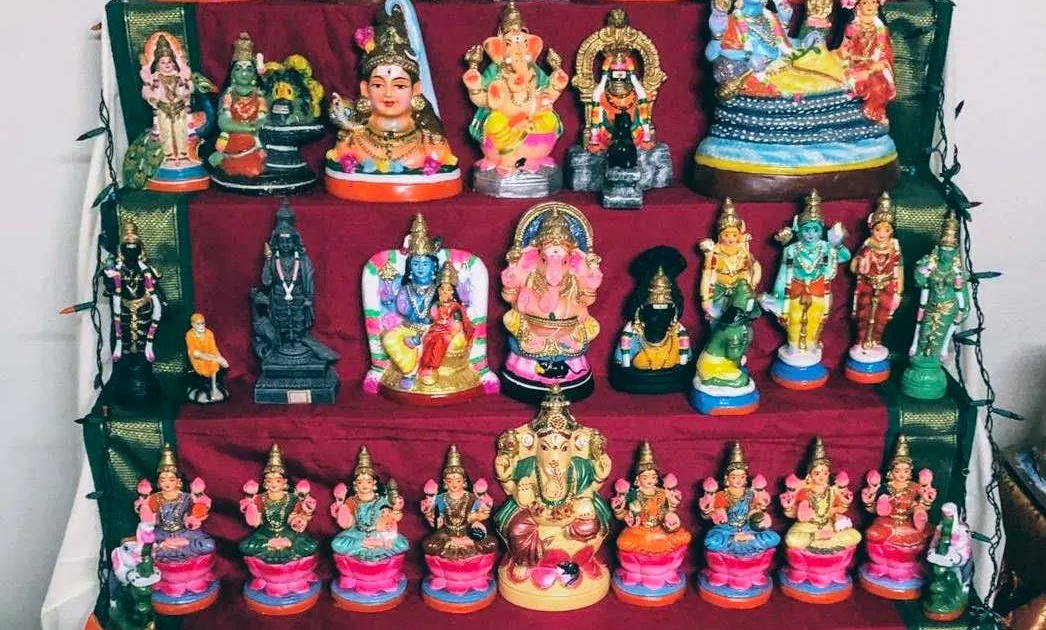India is a land of varied colours, cultures, and creeds. What unites us is the spirit of oneness, and our festivals teach us just that. Dussehra is no different. Call it Durga Pujo, Navrati, Akalbodhan, or Bommai Golu, the spirit that binds the whole country together remains the same.
Festival of female power, Goddess Durga is worshipped differently in different parts of the country. In the west, we have Gujarat’s garba and in the east, Bengal’s Durga Pujo. While northern India is known for Ramlia, Ravan-Dahan, Kanya puja, it is very different in south India. As one starts to move towards the south, the tradition of worshipping Bommai Golu comes up. Golu is the festive display of dolls and figurines.
The southern part of India mainly consists of Andhra Pradesh, Karnataka, Kerala, Tamil Nadu, and Telangana and the union territories of Lakshadweep and Puducherry. Each state has its unique ways and traditions of celebrating the Dussehra festival. While Karnataka’s Mysuru is famous for the decked-up palace that becomes an attraction for tourist, in Kerala, the last three days of Durga Puja is considered auspicious for taking up new work.
Golu: Display of dolls
In South India, the celebrations take the form of Bommai Golu or Navratri Golu – an artistic display of dolls and figurines. The tradition can be seen in states like Tamil Nadu, Karnataka, and Andhra Pradesh. The festivities begin with each household setting up a Golu in the corner of the house.
Golu is known by different names and has different meanings in different languages. While Bommai Golu or Kolu in Tamil depicts divine presence, the meaning changes in Telugu. In Telugu, Bommala Koluvu means Court of Toys. Likewise, in Kannada, Bombe Habba means the Doll Festival.
Setting up the Golu is an art in itself. Dolls and figurines of a multitude of gods, goddesses, animals, men, and children are placed on a steps-like set-up. This is referred to as Bommai Golu.
Decorating the dolls
The dolls have to be placed in multiple steps, in odd numbers, for instance, 11 steps or 9 steps or 3, depending upon the dolls to be displayed.
A Kalash or ceremonial jar filled with water and decorated with mango leaves is placed on the first step, with a coconut placed over it. The Kalash is the representative of Goddess Durga. Near it, idols of God and Goddess are placed. The wooden idols of Saraswati, Laxmi, and Durga, called the Marapachi Bommai, are to be kept on the steps. The other steps contain the idols of saints, heroes while the bottom-most step consists of human figures, engaged in various activities. Playing kids, marriage, singing people, etc are showcased on the step.
The Navratri Golu is kept between three and nine days. Further, books, musical instruments are also kept next to the Golu arrangement. On the 10th day of Navrati, i.e Vijayadashmi, the Golu dolls are symbolically put to sleep and packed the day after.
Bommai Golu significance
The Navrati Golu isn’t kept for mere display. The tradition holds significance and relates to ancient Hindu scriptures. The Golu figurines are arranged in such a way that it celebrates the Indian stories, passed on from one generation to another, like the Ramayana, Puranas, and the Dashavataram.
The Golu also depicts the evolution of life from animals to the sages and seers. As part of Golu traditions, people visit each other’s homes and exchange greetings.














